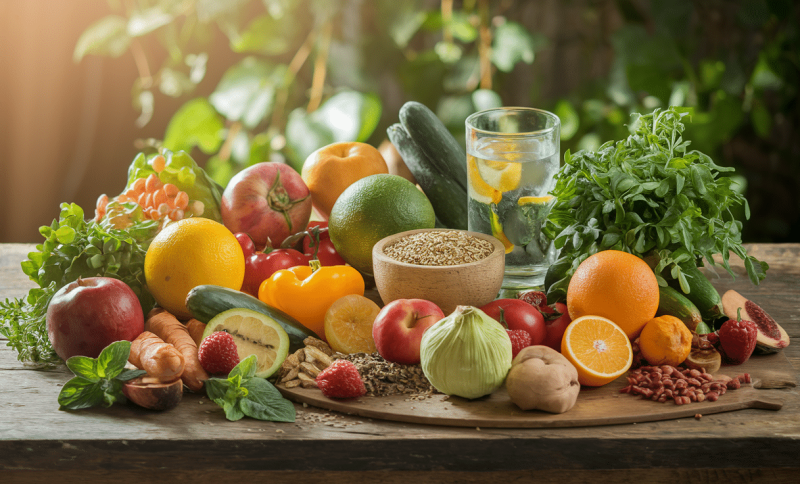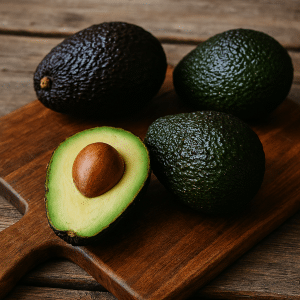Your relationship with food shapes everything: your energy, mood, sleep, and how you feel in your skin.
Most people struggle with diets that focus only on calories or weight loss, leaving them feeling tired and disconnected from their body’s real needs.
Traditional eating plans often overlook the impact of food on your energy, mood, and overall well-being.
A holistic diet provides a comprehensive approach that nourishes the body, mind, and spirit. This method helps you build lasting health by choosing foods that work with your natural systems.
In this guide, you’ll learn what makes a holistic diet different, which foods to include, how to get started with simple steps, and how this approach can address specific health concerns.
What Is a Holistic Diet?
A holistic diet considers your entire person, not just the number on the scale. It focuses on how food affects your body, mind, and emotions. Unlike quick-fix diets, this approach takes time to understand what your body truly needs.
This method centers on whole, natural foods, such as fresh vegetables, fruits with their skins on, unprocessed grains, and high-quality proteins. It includes mindful eating, which involves paying attention to how you feel before, during, and after meals.
The goal isn’t perfection, but creating a sustainable way of eating that supports your long-term health.
Core Principles of a Holistic Diet
The foundation of holistic eating rests on four key principles that work together to support your complete well-being.

1. Choose Nutrient-Dense, Whole Foods
Pick foods that pack the most nutrition per bite. Fresh spinach beats iceberg lettuce. Sweet potatoes offer more value than regular chips. When you shop, ask yourself: “Is this food close to how nature made it?”
2. Eat Mindfully and With Intention
Slow down during meals. Put your phone away and savor the taste of your food. Notice how different foods make you feel an hour later. Pay attention to the signals your body sends.
3. Balance Meals for Complete Wellness
Each meal should support your energy levels, aid digestion, and help maintain a stable mood. Include protein for steady blood sugar, healthy fats for brain function, fiber for gut health, and colorful vegetables for vitamins.
4. Avoid Harmful Substances
Skip foods loaded with artificial colors, flavors, and preservatives. Read ingredient lists – if you can’t pronounce it or don’t know what it is, your body probably doesn’t either. Choose organic options whenever possible for the foods you eat regularly.
What Foods Are Included in a Holistic Diet?
These foods form the foundation of a holistic approach to a healthy diet. Focus on including these options in your daily meals:
|
Vegetables
Whole Grains
Fresh Fruits
Healthy Fats
Quality Proteins
Healing Herbs and Spices
|
Benefits of Following a Holistic Nutrition Plan
When you start eating this way, your body responds in ways that might surprise you. These changes often occur gradually but tend to persist in the long term.

Physical Health Improvements
Your energy levels remain steady throughout the day, without afternoon crashes, while digestion improves, resulting in reduced bloating and fewer stomach issues.
Many people also notice clearer skin and a brighter complexion as whole foods provide essential vitamins and minerals for repair.
Mental and Emotional Benefits
Your brain gets the fuel it needs to think clearly, lifting afternoon brain fog and improving focus at work or school. Your mood feels more balanced with fewer extreme ups and downs when your body gets consistent, quality nutrition.
Long-Term Health Protection
Eating this way may help protect you from future health problems. Whole foods contain natural compounds that support your immune system and reduce inflammation in your body.
Foods to Limit or Avoid in Holistic Diet
While holistic eating focuses on what to include, knowing what to limit helps you make better choices. These foods can work against your body’s natural processes:
|
Refined Sugars and Sweeteners
Unhealthy Fats
Artificial Additives
Highly Processed Foods
Low-Quality Animal Products
Other Items to Minimize
|
Remember: This isn’t about perfection. Small, gradual changes work better than trying to change everything at once.
How to Get Started With a Holistic Diet
Starting a holistic diet doesn’t require a complete overhaul of your kitchen. Take these simple steps to ease into this new way of eating:

Step 1: Start Small
Pick one meal to focus on first. Many people find breakfast the easiest to change. Swap sugary cereal for oatmeal with berries, or replace white toast with whole grain bread topped with avocado.
Step 2: Clean Out Your Pantry
Remove foods with long ingredient lists full of words you can’t pronounce. You don’t have to throw everything away – just stop buying these items when they run out.
Step 3: Stock Your Kitchen
Fill your pantry with basics: olive oil, brown rice, quinoa, canned beans, nuts, and seeds. Keep your fridge stocked with fresh vegetables, fruits, and quality proteins.
Step 4: Plan Your Shopping
Make a list before you shop. Stick to the outer edges of the grocery store, where fresh foods are typically located. The middle aisles contain the majority of processed items.
Step 5: Listen to Your Body
Pay attention to how different foods affect your energy levels and overall well-being. Keep a simple food journal for the first few weeks to track your energy levels and mood.
Sample Holistic Grocery List
|
Leafy greens and seasonal vegetables |
|
Fresh or frozen berries |
|
Brown rice, quinoa, oats |
|
Olive oil and avocados |
|
Wild-caught fish or grass-fed meat |
|
Beans and lentils |
|
Fresh herbs and spices |
|
Herbal teas |
Holistic Nutrition for Specific Health Conditions
These dietary approaches work in conjunction with medical treatment and require approval from a healthcare provider before making significant changes.
| Health Condition | Dietary Focus | Key Foods | Foods to Avoid |
|---|---|---|---|
| Cancer Support | Antioxidants and anti-inflammatory foods | Colorful vegetables, broccoli, cauliflower, turmeric, ginger | Processed foods, excessive sugar |
| Colon Cancer | Digestive health and gut bacteria | Beans, lentils, whole grains, sauerkraut, kefir | Red meat, processed foods |
| ADHD Management | Brain function and stable energy | Fish, walnuts, flax seeds, leafy greens, and pumpkin seeds | Artificial colors, flavors, preservatives, and sugar |
| Special Needs | Easy digestion and brain support | Nutrient-dense foods with preferred textures | Individual trigger foods |
| Hemorrhoid Relief | High fiber and anti-inflammatory | Vegetables, fruits, whole grains, and berries | Spicy foods, excessive caffeine |
| Weight Management | Blood sugar stability | Protein, healthy fats, fiber, and vegetables | Processed foods, refined sugars |
Always consult your healthcare provider before making significant dietary changes if you have a medical condition.
Holistic Nutritional Education Programs
If you want to build expertise in nutrition or help others achieve their health goals, formal education programs offer structured learning and provide professional credentials.
Institute for Integrative Nutrition (IIN) – Focuses on bio-individuality, teaching that different people need different approaches to eating. Their program covers over 100 dietary theories.
Bauman College – Known for their science-based approach to natural nutrition with both online and in-person classes, including hands-on cooking components.
Precision Nutrition – Provides evidence-based nutrition coaching certification with a focus on behavior change and client psychology.
Functional Medicine Certified Health Coach (FMCHC)– Teaches root-cause approaches to health through nutrition and lifestyle changes.
Nutritional Therapy Association (NTA) – Focuses on nutrient-dense foods and foundational nutrition principles. Their program emphasizes whole foods and traditional eating practices.
Final Thoughts: Making Holistic Nutrition a Lifestyle
A holistic diet isn’t about perfection; it’s about progress. You’ve learned which foods nourish your body best and simple habits that support your wellness. This approach works because it adapts to your life.
Small, consistent changes create lasting results. Better energy, clearer thinking, and improved mood come from working with your body instead of against it. Every positive choice matters, even when it doesn’t feel significant.
Start with one small change this week and build from there. Your health is worth every step you take.
What’s the first change you plan to make? Share your thoughts in the comments below. Would love to hear which tip resonates with you the most. You’re already on the path to feeling your best!













